
Early June 2018 Salmon News Update
Conservation:
The Greenland Deal

Bill Taylor of the ASF – second from right – with representatives from NASF and Greenland officials after recent salmon deal discussed below. Photo courtesy ASF.
Here are some excerpts from a recent Atlantic Salmon Federation press release:
“A deal has been reached that will halt commercial salmon fishing in Greenland and the Faroe Islands for the next 12years to allow adult wild Atlantic salmon to return to rivers in Canada, the United States, and Europe.
The financial details are being kept confidential, but Atlantic Salmon Federation spokesman Neville Crabbe said no government money is involved.
He said all funding for the initiative will be raised through donors and fund raising by the two private groups.
Greenland fishermen will still be able to catch up to 20 metric tonnes each year for personal and family consumption.
Officials estimate the change will mean that more than 11,000 mature salmon that would otherwise be caught in commercial nets will begin returning to their home rivers in the spring of 2019.
“The best way to save North Atlantic salmon is to stop killing them. This deal does that in meaningful numbers, said Chad Pike, chairman of the North Atlantic Salmon Fund.
Declining wild salmon stocks have been a concern for years, with both overfishing and global warming being blamed.
According to figures from the Department of Fisheries and Oceans, the salmon population in New Brunswick’s famous Miramichi River has declined by 26 per cent over the last 12 years.”
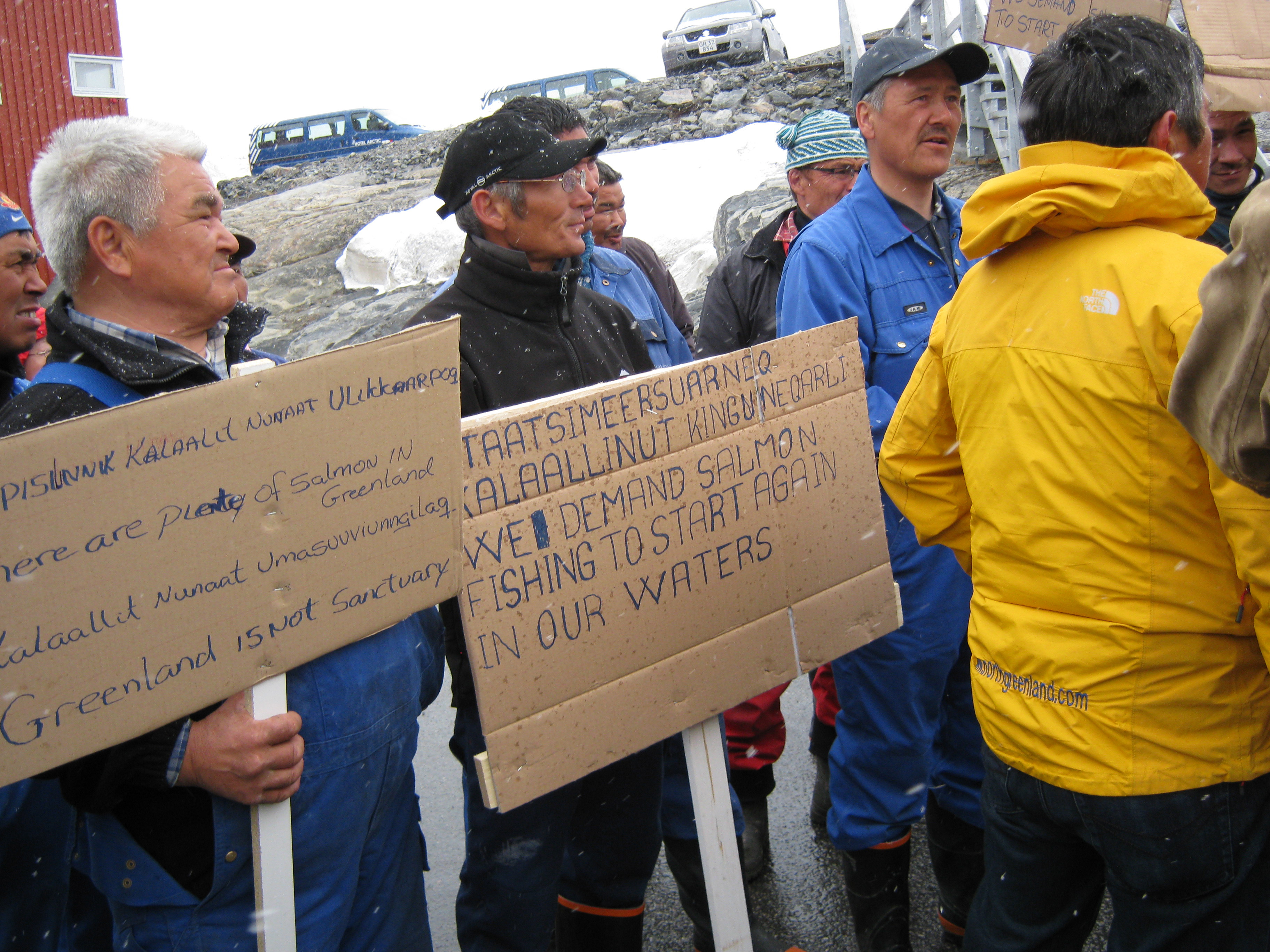
Greenland fishermen a few years back demanding a return to commercial salmon fishing. Photo courtesy ASF.
This is certainly welcome news and shows how worthwhile membership in conservation groups like the Atlantic Salmon Federation and the Miramichi Salmon Association is. I must say, though, that I can’t help but feel the U.S. and Canadian governments don’t do nearly enough to help in these situations. Greenlanders hardly knew what an Atlantic salmon was until the 1970s, now they keep 20 tons for food while New Brunswick residents are forced to release every fish they catch. It hardly seems fair considering that if Atlantic Canada received an equitable portion Atlantic salmon would be extinct in one season. Our politicians are also guilty of inaction here in the U.S. where people donate their money and pay taxes to help restore fish to Maine’s beleaguered rivers, then Greenlanders kill and eat the same fish that we are stocking to rekindle the runs…incredible! Greenland needs help in every way as the country is really struggling, and I can’t imagine that a little arm twisting by our governments wouldn’t have convinced them to accept aquaculture salmon instead… All that aside, though, having 11,000 additional spawning sized salmon return to our Canadian rivers is very positive, and everyone who helped make it happen deserves plenty of applause.
Kelts and Smolts
The Miramichi Salmon Association reports that working with the ASF they tagged 24 kelts to track their ocean life before returning to the river to spawn. They also say that in relatively short order they were able to trap the 5,000 smolts from the Little Southwest Miramichi that they are allowed for the CAST program. The smolts are already feeding in the MSA hatchery and will be grown to adult size for autumn release into the wild for spawning two years from now. Assuming 80% survival the 5,000 smolts will represent 4,000 additional adult spawners in the fall of 2020, which wwill be very welcome.
The MSA and ASF also worked together to tag 80 smolts with internal radio tags to help determine where mortality on these small salmon is taking place.
First Miramichi Salmon of the year
While doubtless someone has already caught a salmon somewhere on the Miramichi system this spring, I can state with certainty that some have at least been seen in the last few days. Keith Wilson reported on the Wilson’s website that they had seen salmon in one of their pools, Byron Coughlin of Country Haven said that he has had several reports of bright fish being seen including by Eddie Colford at Black Brook, but very few people are fishing at the moment, and Jason Curtis says that he has seen three, one rolling as it moved up the river in front of his house, and two more crossing the bar above the mouth of Cains. This is reasonably early for the Southwest Miramichi, and we’ll take it as a good sign.
Russian Atlantic Salmon Fishing
I just returned from fishing the Varzuga and Kitsa Rivers on the Kola Peninsula in Russia with English outfitter Roxton’s that has had camps on the Kola for 30 years. These two rivers share the same estuary and mouth. Historically the Varzuga has been known for very large numbers of grilse and small 2 multi sea-winter salmon up to about 9 pounds with the occasional larger fish also being caught.
Numbers for almost all salmon rivers have declined over the last few years, but down on the Kola Rivers is relative to the incredibly high catches that occurred in the past. I personally brought 35 bright salmon to the net in 6 days of fishing, and I only fished within the 8 hours a day that we spent with our guides on the river. Frankly, that was enough to scratch my itch. That is an average of landing a bright salmon every 80 minutes. Of course they don’t come quite that regularly; on the other hand my fish catch was remarkable consistent. In each of the 12 morning and afternoon sessions that took place over the week I landed at least one. I also lost a fair number at various stages of the fight and additionally got about as many kelts as bright fish. Some of the kelts were quite well-mended and hard to tell apart from the bright fish by the fight alone. You could tell by the appearance, though, as fresh fish from this river system have vivid blue backs that make them quite unmistakable.
Some may remember my blog from last year, and if not you can just scroll down and read it. Last year it was freezing cold and with snow or rain virtually every day. It was the record cold spring for the Varzuga area, and this spring we were essentially back to normal. Wild flowers were coming out everywhere, trees were largely leafed out, and the bird life was incredible. I even got to hear my first cuckoo. Yes, their call is definitely where the name comes from…
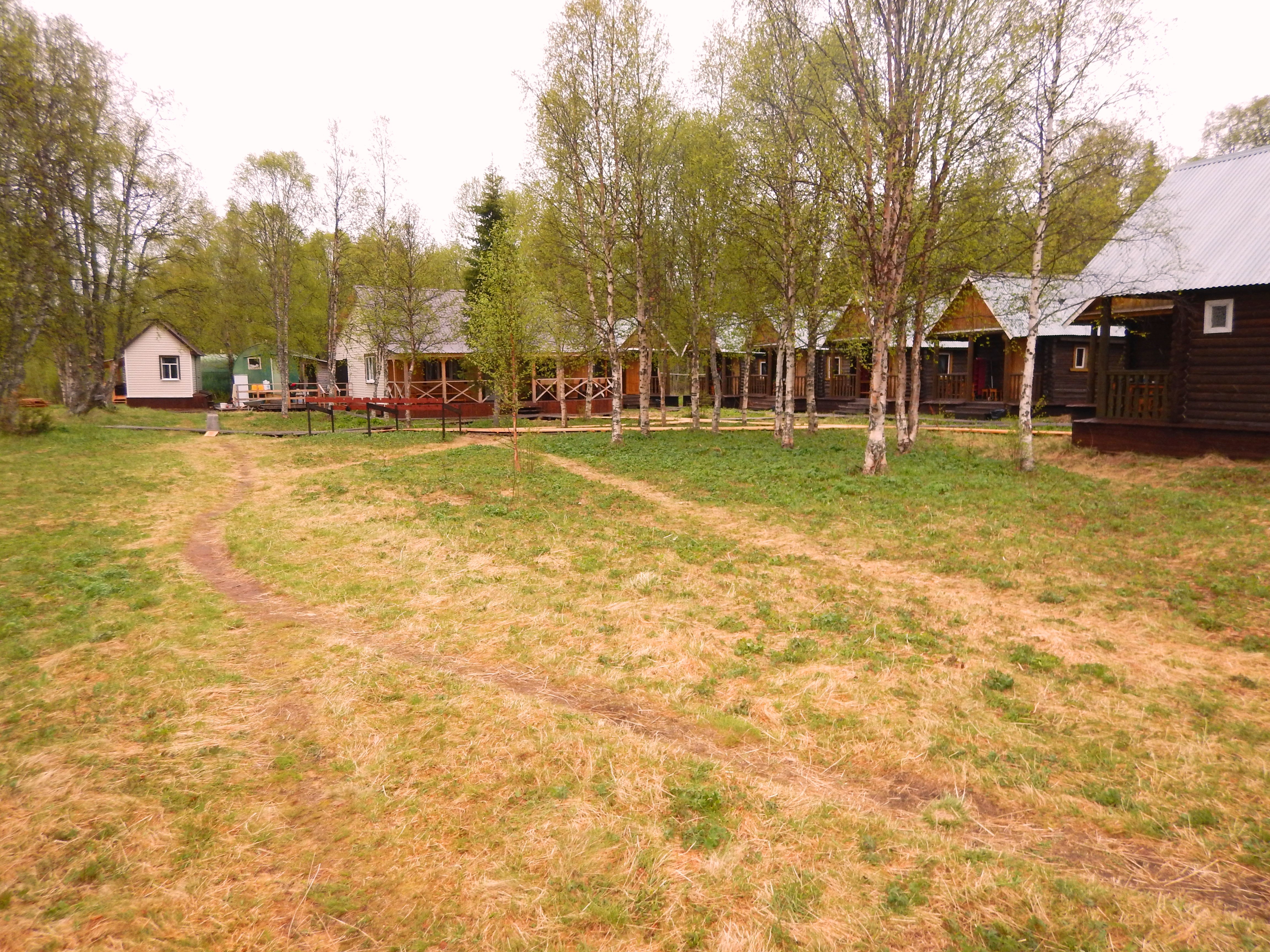
Kitsa camp is very comfortable. This river is smaller, perhaps a little bigger than the Cains, but with a much steeper gradient.
Russia is a long haul from Maine, but none-the-less the path is relatively simple – the return especially. The helicopter left the lodge at 6:30 in the morning for the two hour flight over the tundra to Murmansk. At Murmansk we met with anglers from other rivers all around the Kola who had all come in with us on a special chartered flight between Helsinki, Finland and Murmansk, Russia. We were in Helsinki by early afternoon, London’s Heathrow by late afternoon, and in Boston with all my bags shortly after 10:00 PM – of course my biological clock said 6:00 AM, which means I had been more or less awake for 26 hours. Still, what an incredible thing to get home from the Arctic Kola Peninsula in Russia to Boston, MA in the same day. Both these lodges are very nice, especially considering their remote locations. Roxton’s is known for having things quite well in hand. It was all very comfortable, and the food was excellent.
Rather than write a lot more about the trip – because it could quickly become a book – I’m going to post a bunch of photos below with captions. I only carried my underwater camera with me in case of a slip while wading so these aren’t National Geographic quality, but they will serve the purpose. Double click on any photos and they will open up to full page. I’ll be happy to answer any questions that you may have if you e-mail me at bigbass@maine.rr.com or just post a question in the comments to this blog and I’ll answer it there for others to see in case someone is interested.
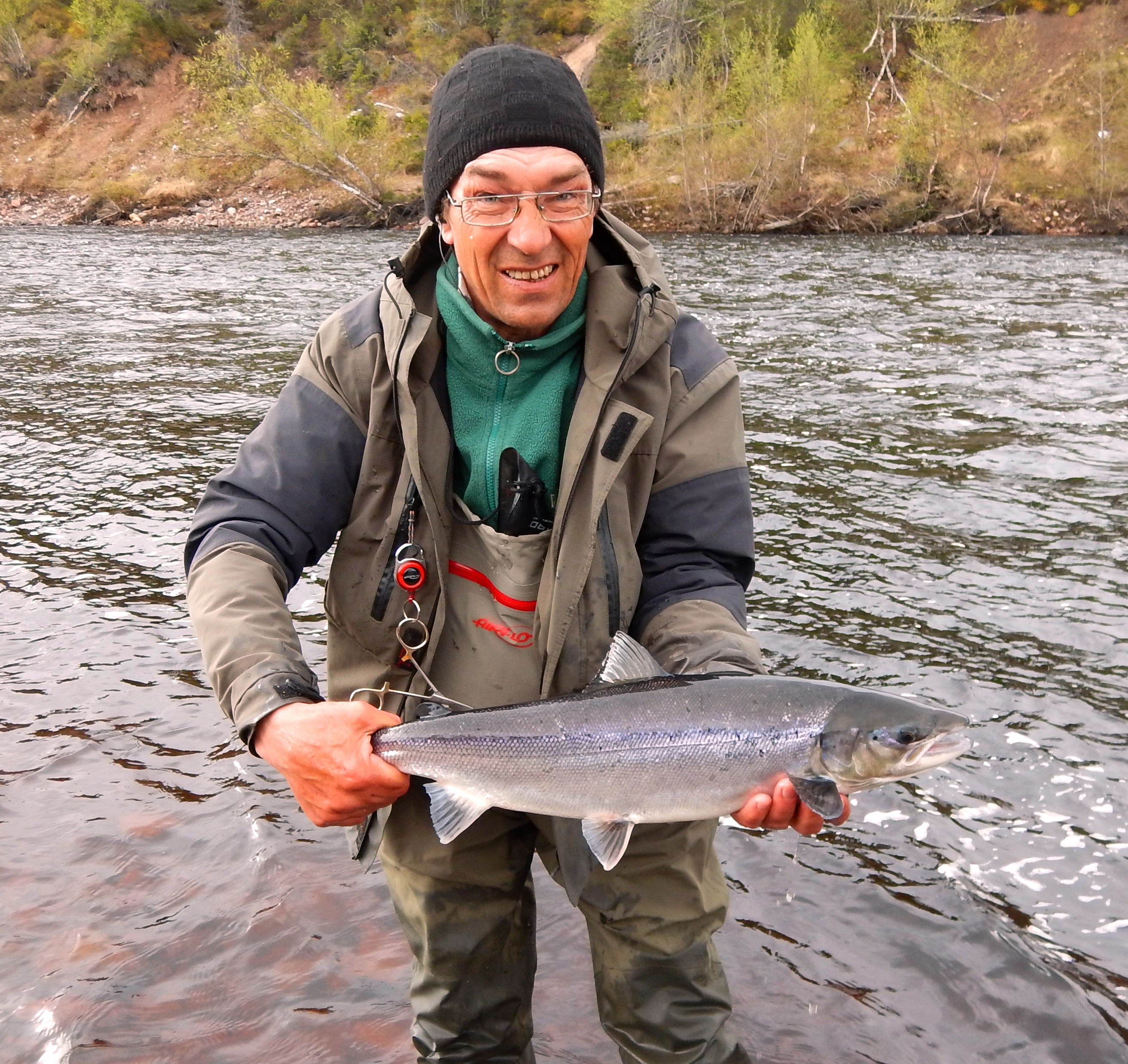
Russian guide Victor with a typical Varzuga/Kitsa salmon fresh from the sea. Note the blue, almost purple coloration.
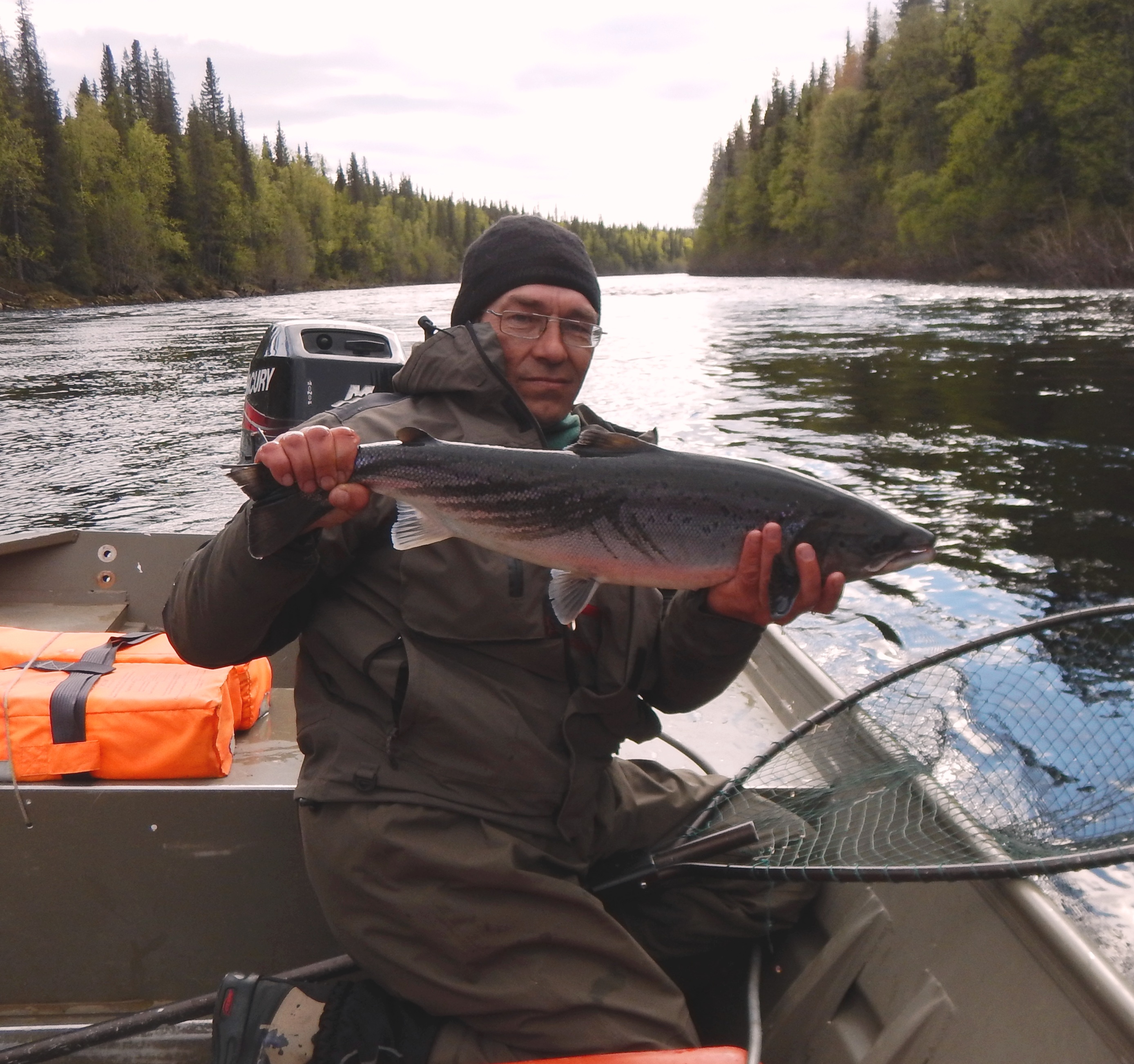
Osenka or ice fish… These are salmon that come in during the fall to spawn the next fall. Note the reddish tone to the belly. Osenkas are also slightly less shiny than a fish fresh from the ocean. These aren’t kelts, though, and they fight like the devil. Some rivers like the Ponoi have a huge run of these fish.


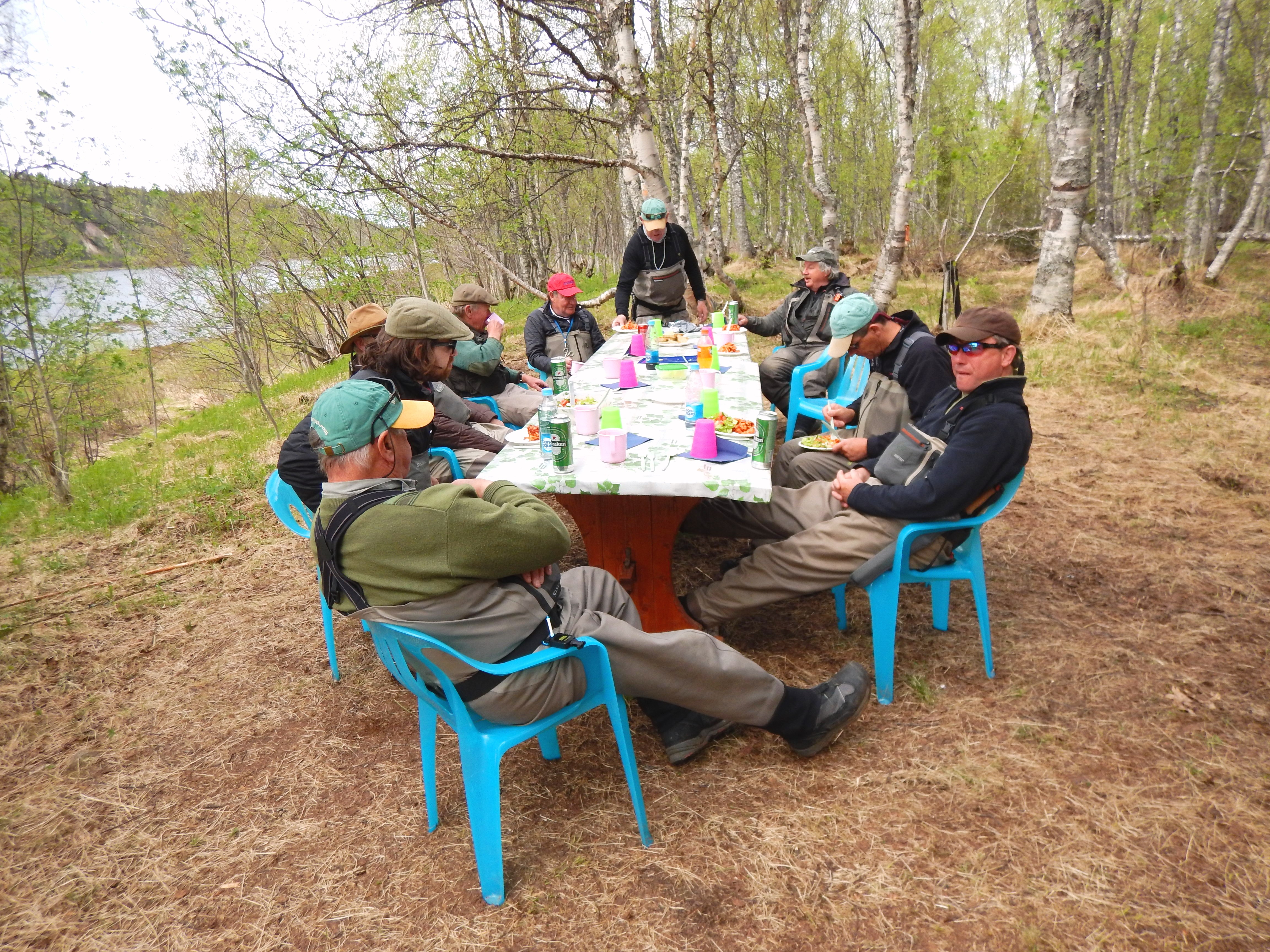
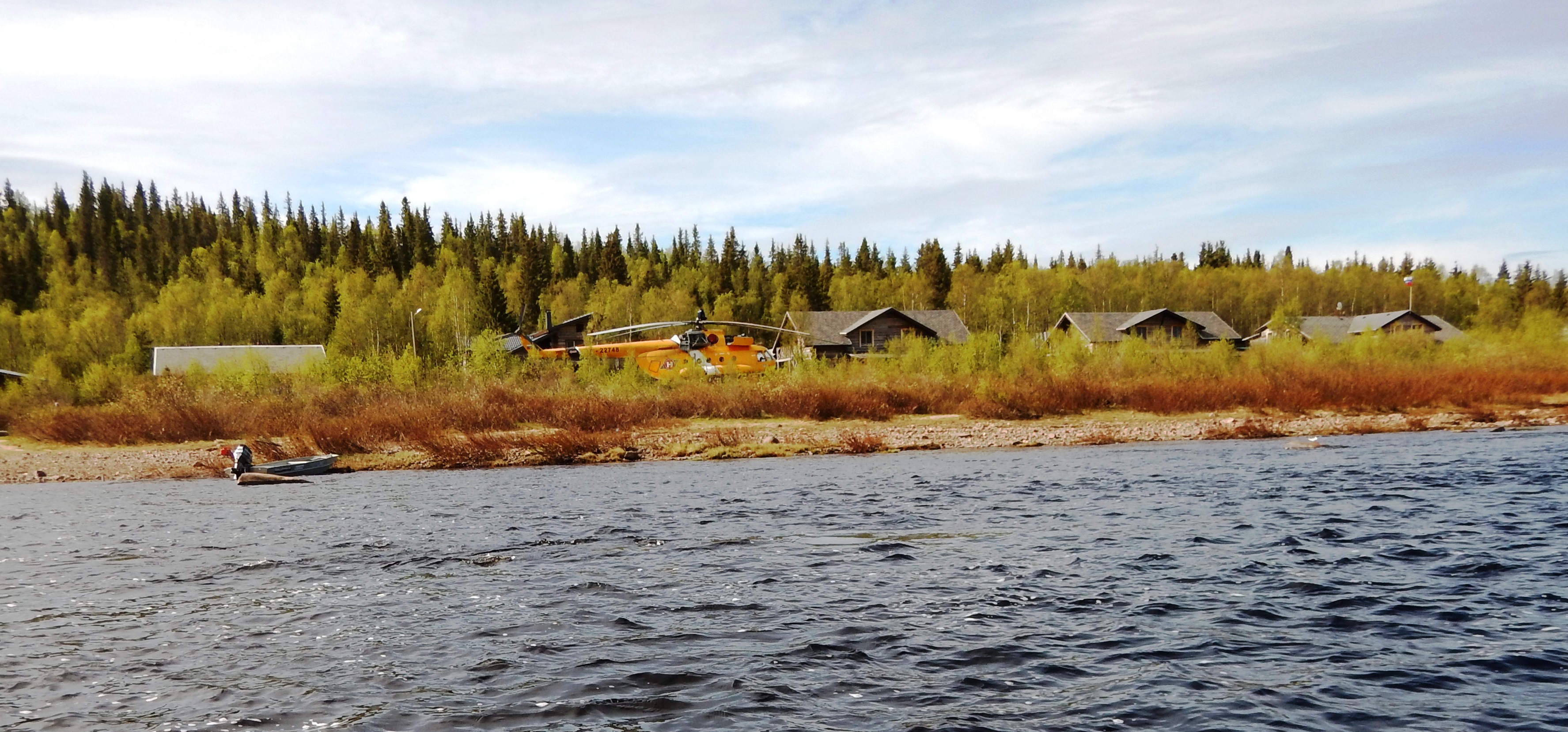
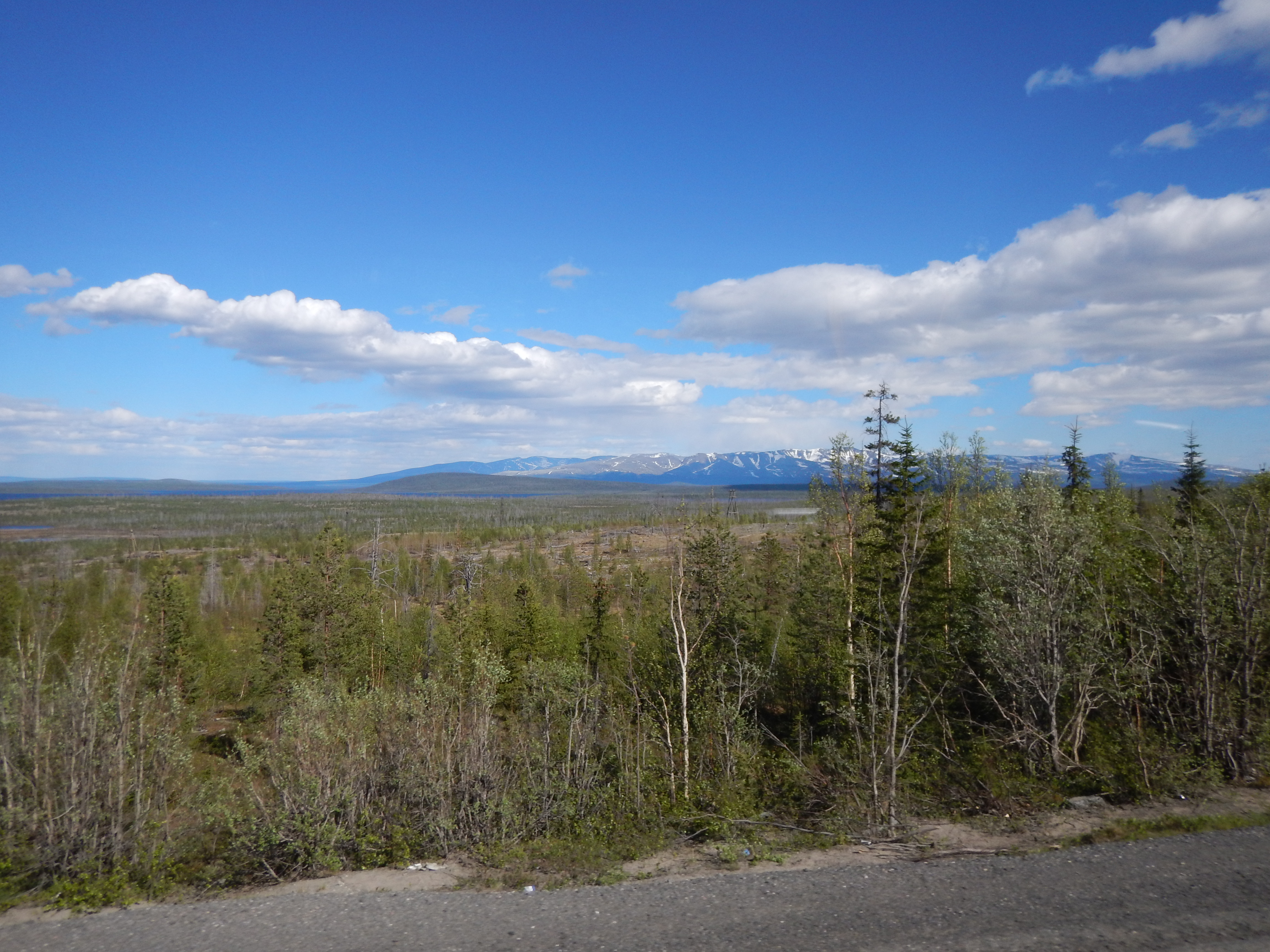
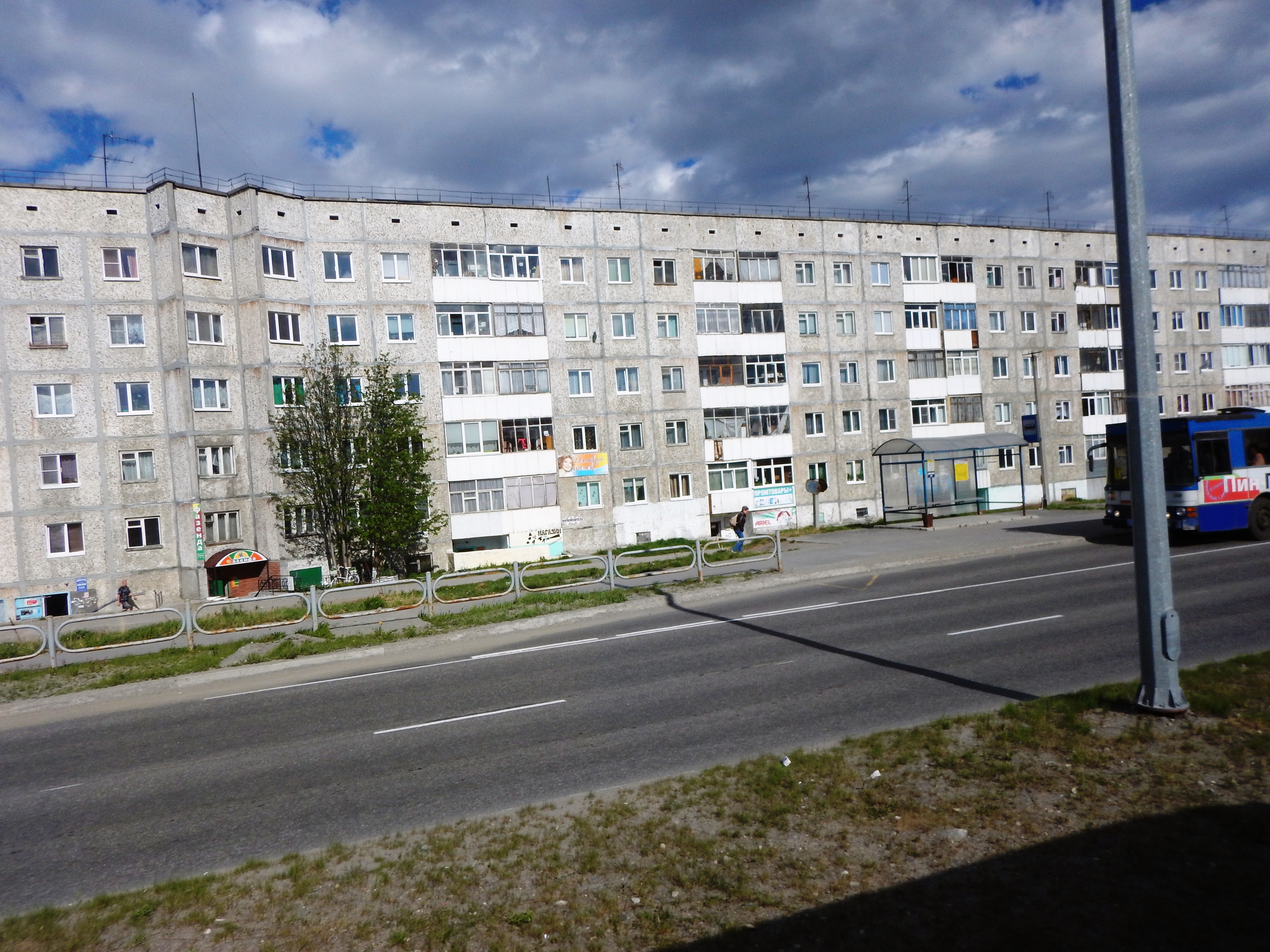

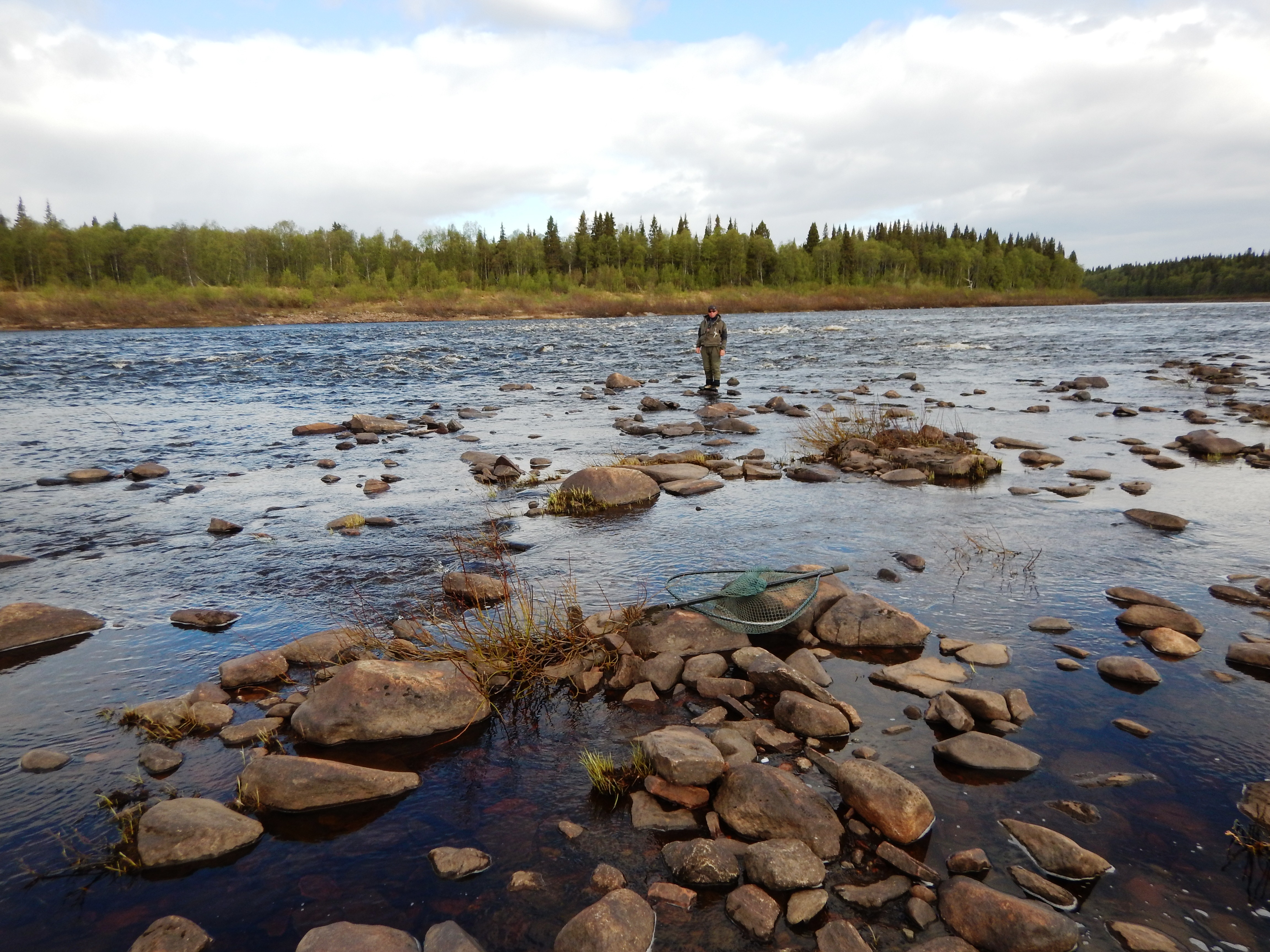
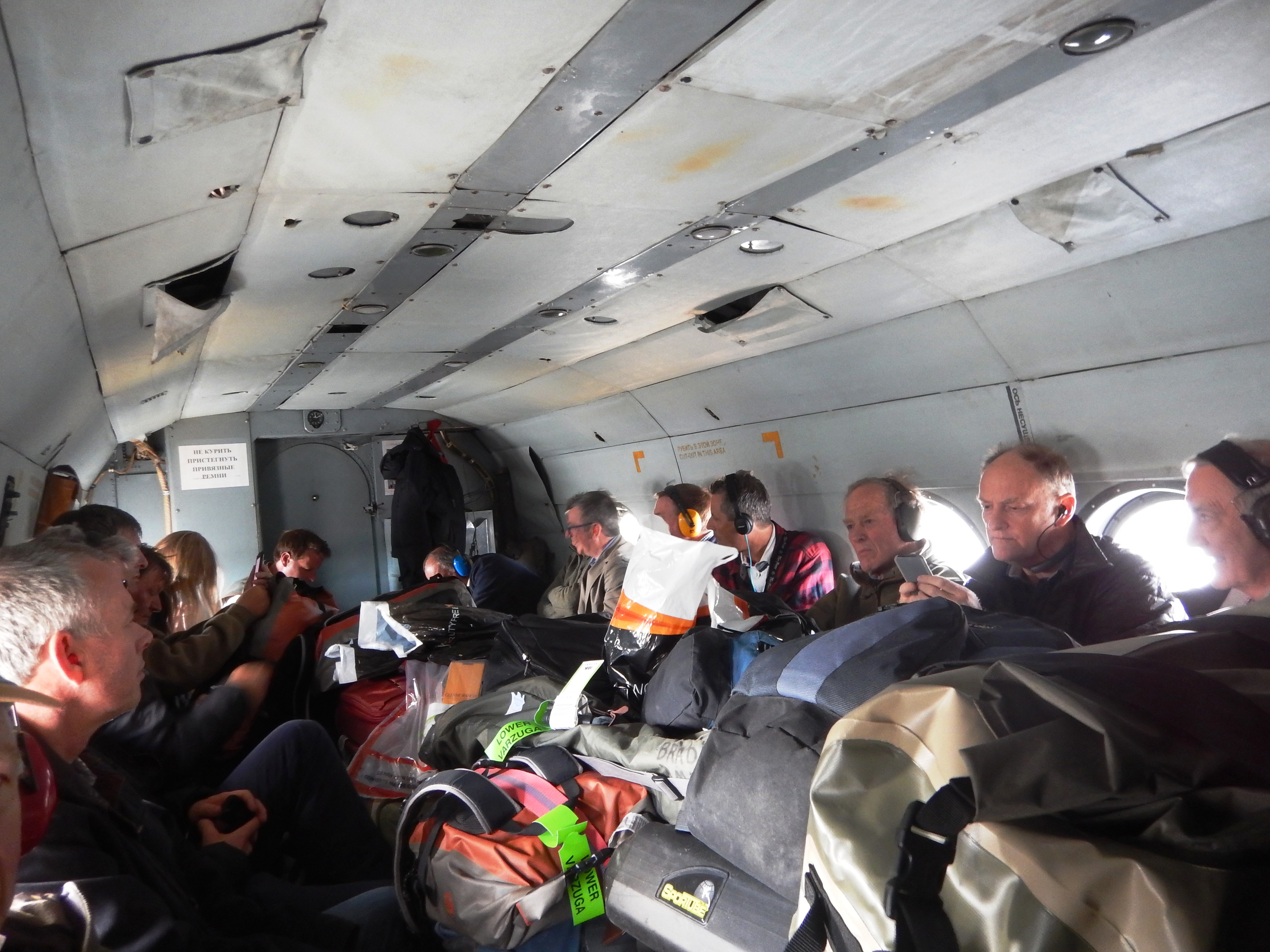
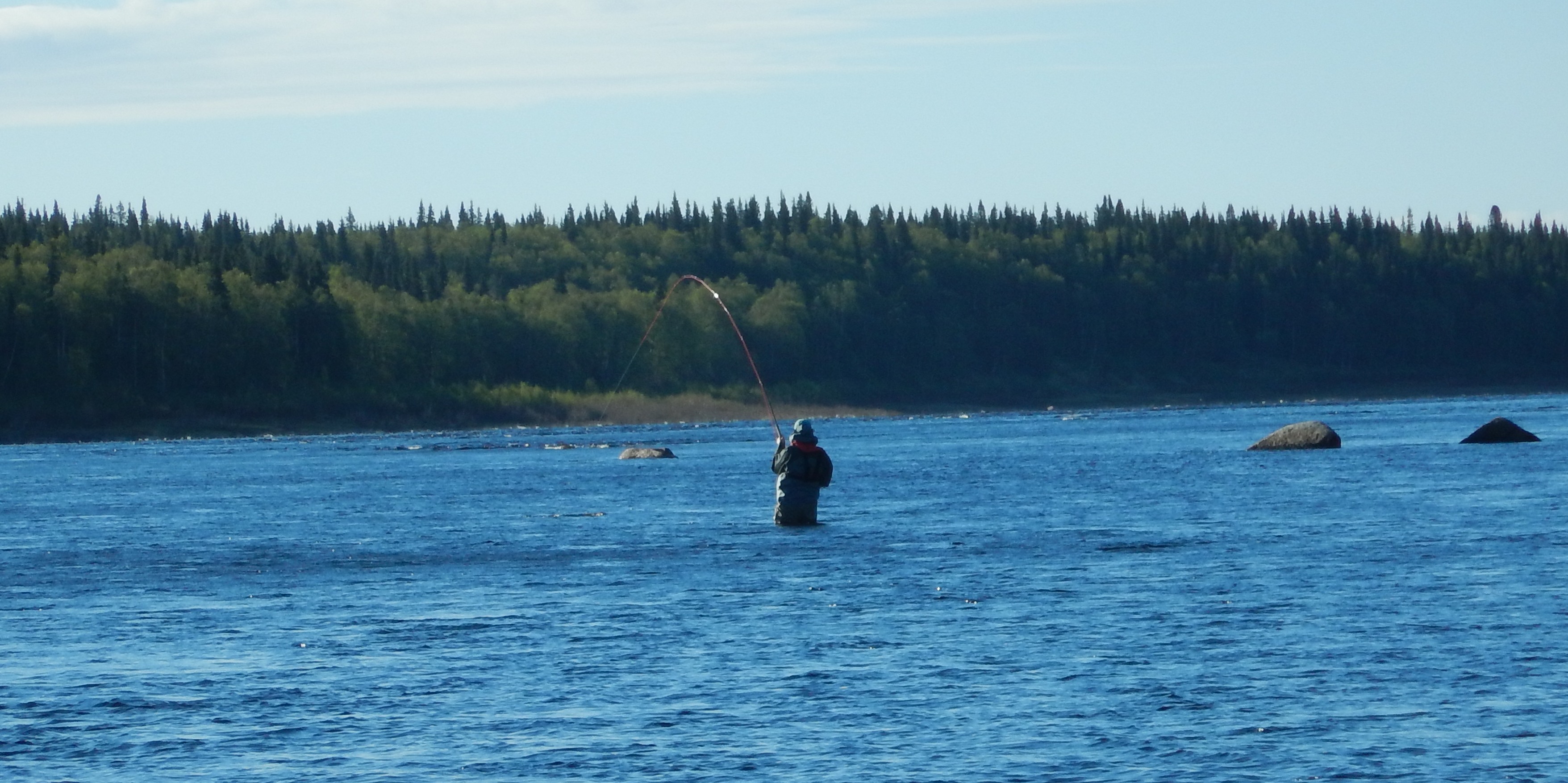
Brad,
Good to see you safely back from that special salmon-fishing place.
Two points. I agree with the osenka colours point – when I’ve been there in May I”ve had the week split with the more coloured fish in the first half of the week, and (smaller?), brighter fish coming through after. Yes the purple-y chaps hang out under the frozen White Sea through winter (or part of it).
Secondly, office hours. I agree that full days of fishing in Russia leave you able to take a break from it for a few hours overnight without needing to fish up to midnight or get up at 5. I’ve done that a bit but not much and if you fish all the time you fish the great social life.
And good news about the Greenland buyout, though I take the points you make.
Henry.
Henry – I readily admit to knowing very little about the Osenkas. We heard from people at the Ponoi that they had incredible fishing on these fish last week with big catches and some fish weighing over 50 pounds. I assumed the fish spent the winter under the ice in the river as kelts do, but perhaps that is all wrong and they are in the estuary or as you say out in the White Sea.
I remember years ago fishing up on Victoria Island in the Canadian Arctic for char. Those fish had a two year cycle also where they returned as silver fish in the summer, turned red the next summer, and spawned that fall before going back to sea. It is an interesting biological adaption, especially with fish in the river that actually do come in and spawn in the same year. Brad
Reports indicate 2 Fresh Fish were landed yesterday at the Wayerton Bridge !
Well, there is some good news. Thanks for the report Duane.
Brad, Glad to hear you are safely back home from your adventure in Russia. I followed Roxton’s Varzuga Blog each day while you were there and noticed your name mentioned a couple times regarding your success in catching and landing salmon (not surprising). I was very pleased to learn the weather conditions were more comfortable for you compared to last year.
Looking forward to fishing with you later this year on the Miramichi and Cains.
-Casey
Thanks Casey. It was a lot friendlier climate than 2017 for sure. We even had the opportunity the second half of the week on the Kitsa to cast to some fish that were holding on some structures and showing a bit. That was very nice.
I am always curious about the types of flies used on different rivers; patterns, sizes, tubes, etc. When I fished Ponoi several years ago in mid-June, the water was low and the most popular pattern was the cascade tied on a double salmon hook in #6 and #8. We used some plastic tube flies too (willie gunn). What were the most popular fly patterns for you last week?
Casey – it is hard to go wrong with a Willie Gunn. I have caught over half my early season Scottish fish on these, and it accounted for most of my fish on this trip. Some of that is just a self-fulfilling prophesy, but it is hard to put one something else when they have readily been taking the Willie Gunn. I was using a fast sinking 15′ tip on a Rio Scandi multi tip for most of the week, and I only needed an aluminum tube to get deep enough. Europe is the land of tube flies, and only rarely did we fish anything else. The water temperature was hovering around 50F, and in that environment I like a fairly long fly. It seemed that the more chewed up it became the better they liked it. It ended up being so thin that I put on a new one, but I don’t think I did any better if as well after the change. I would only add that I usually modify my Willie Gunns by palmering in a hackle at the head – cascade style. I like that concept because I think it imitates gills and makes the whole fly swim a little better by damming up water at the head of the fly forcing it to move side to side more than it otherwise would.
Bradd, thanks for another great update. Your Russian trip is very interesting. Fishing salmon in Russia is on my bucket list but not sure I’ll ever make it. I did however just return from fishing the Miramichi. We fished out of Bullock’s in Boiestown for 4 days from May 31st thru June 3rd. On Thursday and Friday we boated out of the 1st Nation access in Red Bank and headed down The NW to fish for Stripers. The weather was an unreal 86 F when we launched at 2 pm. We ran into Philip Lee who had just finished fishing that morning and he indicted the river was alive with stripers. As we motored down river past the Cassilis trap net, we saw DFO fisheries people continuously tossing nets full of stripers out of the trap. Fishing started about a half mile below the trap on one of the mid river sand bars and we fished floating with the tide about a mile up river til just before dark. Fish were everywhere! Your could see them swimming around the boat. They were also in spawning schools, rolling over a large females at the head of the pack, everywhere as far as you could see. My son and I fished a pattern Jerry Gibbs had success with last year, a tan Kinky Muddler, and caught fish continuously all day. I never made a cast that I didn’t have a follow, a swirl or a hookup! Hooked fish were followed by a masses of fish and Dan Bullock when netting a fish once captured 4 others in the process. We even hooked a fish eating lunch with a fly left dangling in the water. We landed 2 fish over 36″ and killed 6 fish that averaged about 24″. I released so many fish my thumbs were bloody. The next day, with Boca Grip in hand and the same weather conditions, there seemed to be even more fish around. This is an absolute marvel of nature, albeit a perverse one. Nevertheless, I would urge everyone to experience this to see what is happening. Saturday we were so exhausted we decided to try for early salmon and sea trout. Except for a couple of small trout we were without any luck. That evening DFO announced a lower NW river closure from Monday thru Friday. A big front came thru Saturday nite and we returned to fish for stripers on Sunday only to experience a absolutely dead River! Not one fish caught by anyone, not one fish sighted showing. A quick measure of water temps showed the river had dropped from the low Sixties to the mid fifties so the spawn was apparently stopped dead in it’s tracks. Since temps have remained cool for most of the week I suspect DFO’s closure was very ill-timed and I wonder if they are going to modify it. As a side note we cleaned 24 fish killed by our group and examined the stomach contents and NO fish had any food in their system. While it’s reported stripers do feed during spawning I suspect they may do so more after than during the spawn. Again I urge all to see this in person you won’t regret it!! Let’s all hope by some miracle the smolts make it thru this enormous mass of stripers.
Thanks Bill, for your excellent report on the stripers. The water a couple of days ago got down to 50F on the SW Miramichi, and probably as low as 48 or 49F on the North West. I don’t know how that would effect the eggs already broadcast.